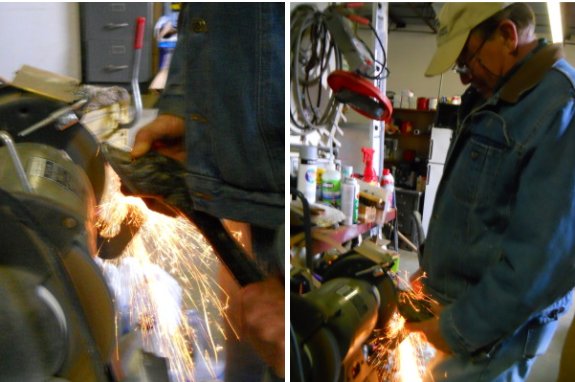
How to sharpen a Chopper 1 axe

Our friendly, neighborhood
hardware store sharpens dull tools free of charge.
I've never asked the people
at Home Depot or Lowes for this kind of extra service,
but something tells me their store policy would frown on any activity
that produced such a high volume of sparks.
Buying a grinder would cost
somewhere between 50 and 200 dollars, but beware of the steep learning
curve. If you don't do it right you could ruin a good axe or sword.
Want more in-depth information? Browse through our books.
Or explore more posts by date or by subject.
About us: Anna Hess and Mark Hamilton spent over a decade living self-sufficiently in the mountains of Virginia before moving north to start over from scratch in the foothills of Ohio. They've experimented with permaculture, no-till gardening, trailersteading, home-based microbusinesses and much more, writing about their adventures in both blogs and books.
Want to be notified when new comments are posted on this page? Click on the RSS button after you add a comment to subscribe to the comment feed, or simply check the box beside "email replies to me" while writing your comment.

Bench grinders are very fast, but I wonder how appropriate they are for sharpening tools.
The axe head is large enough to absorb a lot of heat, but with smaller tools like chisels and knives the edge can become hot enough to alter the structure of the metal. This could destroy the temper of the steel, depending on the alloy.
A sharpening stone (whetstone) lubricated with water will certainly not heat up the metal enough to do that.
J --- Yes, a common homesteading problem.
Roland --- Interesting. It's quite possible our hardware store guy wouldn't have used the bench grinder for anything smaller --- I believe he's used it on our lawnmower blade as well as the maul.